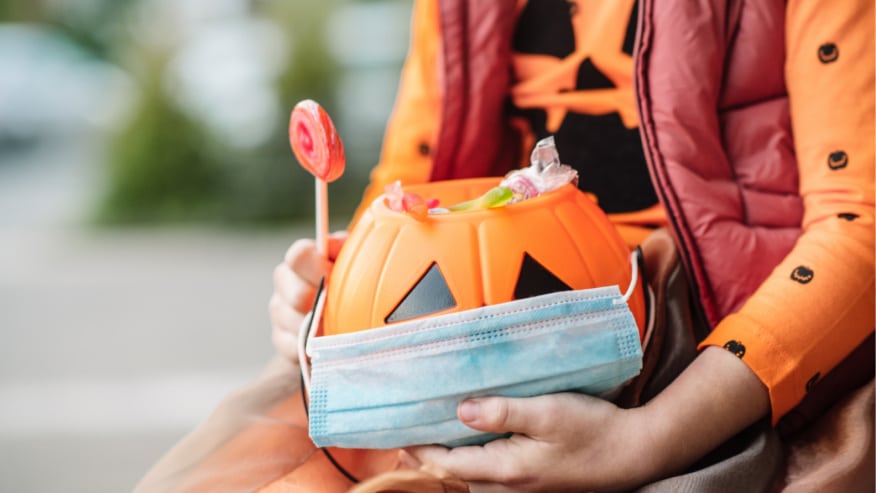Consumers worldwide have greatly increased their online spending in 2020, in large part due to COVID-19. Continue reading “What this year’s surge in online holiday shopping means for retailers”
Category: Research
COVID-19 holiday shopping patterns provide valuable retail marketing insights
Make no mistake—consumers still want to buy gifts this holiday season, COVID-19 or not.
Continue reading “COVID-19 holiday shopping patterns provide valuable retail marketing insights”
How top-performing Black Friday marketing campaigns will look this year
Is the Black Friday of yesteryear officially “dead” in 2020? Continue reading “How top-performing Black Friday marketing campaigns will look this year”
Department Stores Make a Comeback this Holiday Season
Shopkick survey finds consumers plan to spend most of their holiday budgets at department and apparel stores; shipping costs will impact consumers’ online shopping decisions.
Continue reading “Department Stores Make a Comeback this Holiday Season”
BOPIS retail: COVID-19’s influence on changing consumer behaviors
The period of self-containment, businesses shuttering, and isolation may be just a short blip in the grand scheme of things, but as the pandemic continues to linger on through the end of the year, its impact cannot be ignored. Continue reading “BOPIS retail: COVID-19’s influence on changing consumer behaviors”
Back-to-school shopping trends 2020: COVID-19’s effect on purchasing habits
The 2020 school year is unlike any other in U.S. history. Continue reading “Back-to-school shopping trends 2020: COVID-19’s effect on purchasing habits”
Halloween Lives On: Americans Hit the Stores this Spooky Season
Shopkick survey finds big box will win shoppers’ dollars; majority of parents will allow their children to trick-or-treat this year
Whether it be decorating the house, carving pumpkins, watching seasonal favorites, or handing out candy to trick-or-treaters, plans for this year’s Halloween festivities appear spookily similar to years’ past, despite the pandemic. Turns out, most consumers (84 percent) will shop in-store to purchase costumes, candy and decor. Even more surprisingly, 55 percent of parents said they will allow their children to go trick-or-treating this year.
Shopkick surveyed more than 13,000 people to see how they plan to participate in this Hallows’ Eve.
Halloween Headlines:
- Tricky Treating:
- Although CDC advises against it this year, 55 percent of parents say they will allow their children to go trick-or-treating. Of all parents, millennials are most likely to allow trick-or-treating (65 percent), compared to Gen Z parents (51 percent) and Gen X parents (51 percent). Additionally, parents from states with some of the highest COVID-19 infection rates, like Florida (50 percent), Texas (49 percent) and California (33 percent), are less likely than parents from states with some of the lowest rates, like Colorado (67 percent) and New Jersey (59 percent), to allow their children to go trick-or-treating this year.
- In-Store Wins Halloween: This year consumers plan to shop in-store for their Halloween goodies. More consumers will head to big box stores for purchasing candy (49 percent), costumes (48 percent) and decorations (43 percent).
- Costume Craze: Of the 46 percent that plan on purchasing costumes either for themselves or their children this year, 73 percent will buy them in-store at big-box retailers (48 percent), a Spirit Halloween store (32 percent), or a party store (9 percent). The majority of shoppers purchasing their costumes online will do so on Amazon (57 percent). Nearly twenty percent of parents will not buy new costumes for their kids, instead opting to re-wear something they already have.
- Spooky Spending: Despite the pandemic, the majority of those surveyed (56 percent) will spend the same amount of money celebrating Halloween as they have in the past. When it comes to candy, 47 percent plan to spend up to $20 and 40 percent plan to spend between $21 and $40. Just 10 percent plan to spend between $41 and $60. For costume-wearers, 44 percent will spend between $21 and $40 on their look, followed by 23 percent who plan to spend between $41 and 60, 18 percent who plan to spend $20 or less, and 15 percent who will spend over $61.
- Candy Cravings: When asked what kind of candy consumers will purchase, most say anything with chocolate (88 percent). The second most popular candy is chewy/fruity (42 percent), followed by caramel (40 percent), lollipops (37 percent), sour gummies (36 percent), candy corn (28 percent), taffy (25 percent) nut-filled (20 percent) and gum/mints (12 percent). Most shoppers will purchase fun-size variety bags (83 percent) rather than full-size candy bars (23 percent).
- Chocolate over Carrots: Although sweets and treats are viewed most favorable on Halloween (71 percent), 29 percent of consumers say they will opt for healthy alternatives like carrot snack bags, toothbrushes, or trail mix.
- The Sooner the Sweeter: The vast majority (93 percent) of consumers purchasing candy will do so in-store, most popularly at big-box stores (49 percent) or grocery stores (29 percent). Of those, 55 percent plan to make their candy purchases in early October, followed by 26 percent the week before Halloween and 3 percent the day of.
- Pumpkin is King: When it comes to spooky decor, the majority of shoppers (85 percent) say pumpkins are the most essential, followed by Halloween lights (60 percent), Jack-o’-lanterns (57 percent), spiders and spider webs (52 percent), skeletons (45 percent), tombstones (27 percent), animatronics (12 percent), and, lastly, fog machines (10 percent).
- Halloween at Home: When asked how they plan to celebrate Halloween at home this year, the majority of consumers plan to participate in all the usual ways. The most popular activities include decorating the house (39 percent), carving pumpkins (31 percent), having a Halloween movie marathon (27 percent), and staying home and giving out candy to trick-or-treaters (26 percent).
To learn more about how Shopkick can help you drive sales this Halloween, send us a note partners@shopkick.com.
Shopkick conducted a survey of 13,852 consumers across the country to gain insights into their Halloween plans. The survey was conducted online from September 9 – 14, 2020.
Back to school marketing: COVID-19’s impact on your omnichannel strategy
During a regular season, back-to-school spending tends to taper off in September. Continue reading “Back to school marketing: COVID-19’s impact on your omnichannel strategy”
‘Tis the Season: Consumers Will Turn Online to Holiday Shop During the Pandemic
Shopkick survey finds majority of holiday shoppers will make more online purchases than usual, but many plan to host normal holiday gatherings.
While 2020 has been a year full of change, one familiar feeling is setting in — the holiday season will be here before we know it. With states shutting down for a second time due to an uptick in COVID cases, more consumers plan to shop online (a 16 percent increase compared to last year), but nearly half (45 percent) expect to host the same amount of friends and family at this year’s holiday gatherings.
Shopkick surveyed nearly 17,000 American consumers to gain insight on when, where and how they will be shopping this holiday season. The survey uncovered how much shoppers plan to spend, and how they think the current health and economic crises will impact their behaviors.
Key findings include:
● Online Occasion: While online shopping is beloved by many year-round, it will be especially useful this holiday during the pandemic. The majority of shoppers (67 percent this year vs. 51 percent in 2019) expect to make their holiday purchases online to avoid crowds and exposure. Of those shopping online, 65 percent plan to purchase gifts via Amazon, followed by big box retail sites like Target.com and Walmart.com (18 percent), and department store sites like Macys.com and Kohls.com (six percent).
● Amazon and Etsy and eBay, oh my: For those planning to shop at online-only retailers, 72 percent plan to find gifts on Amazon, followed by Etsy (56 percent), eBay (43 percent), Wayfair (39 percent), and Overstock (32 percent).
● Spend Trend: Sixty-three percent expect to spend a similar amount of money as last year on their holiday shopping (ranging from $301 to $600), however, 23 percent expect to spend less than last year. Meanwhile, 14 percent expect to spend more.
● Add Free Shipping to the List: Last year, low prices were the most important incentive for shoppers, but with more shopping online this year, the majority of consumers (54 percent) are most incentivized by free shipping. Just 24 percent believe low prices are most important.
● BOPIS with a Bow: With the help of “buy online, pick up in-store” (BOPIS), making holiday purchases is more convenient than ever. Just 17 percent of consumers say they will not be taking advantage of BOPIS this year, compared to nearly half (44 percent) who say they will.
● More Clothes, Fewer Toys: This year, 25 percent of gift-givers plan to spend most of their budget on apparel, beating out last year’s top category – electronics. Following closely behind, 21 percent plan to spend most of their budget on electronics, toys and video games.
● Early Bird Gets the Gift: Shoppers are still itching to cross off their holiday lists early this year. With nearly identical results to 2019, 34 percent plan to get their shopping done before Thanksgiving, 27 percent plan to shop between Black Friday and Cyber Monday and 17 percent expect to shop on Black Friday.
● Gifts and Gatherings: Considering the surge in COVID-19 cases, it is no surprise that nearly 50 percent of Americans plan to host fewer friends and family at this year’s holiday gatherings. However, 45 percent of Americans expect to host the same number of people, with five percent even planning for larger holiday celebrations.
“As the most important season for retail quickly approaches, there is rising concern about the impact the COVID-19 crisis could have on consumer shopping behaviors,” said Dave Fisch, general manager of Shopkick. “Our data shows that holiday shoppers are already preparing for the season in new ways. With less of a focus on the experiential holiday activations that have dominated years past, brands and retailers must step up their omnichannel and e-commerce capabilities to be successful through the end of the year and beyond.”
To learn more about how Shopkick can help you reach consumers wherever and whenever they’re shopping this holiday season, get in touch at partners@shopkick.com
This survey was conducted between June 25 and July 1, 2020.
Market share 101: How to gain market share in retail
Are you wondering how to gain market share in retail and build a successful retail empire? Continue reading “Market share 101: How to gain market share in retail”
Forty Percent of Millennials and GenZ Drinking More Wine than Pre-Pandemic
Firstleaf and Shopkick share tasty data for National Red Wine Day and find GenZ prefers Rosé
Continue reading “Forty Percent of Millennials and GenZ Drinking More Wine than Pre-Pandemic”
A new normal: Preparing for changes in consumer behavior post-COVID-19
Consumption habits have been deeply disrupted by the emergence of COVID-19, leaving shoppers and retailers with much uncertainty about the path ahead. Continue reading “A new normal: Preparing for changes in consumer behavior post-COVID-19”












